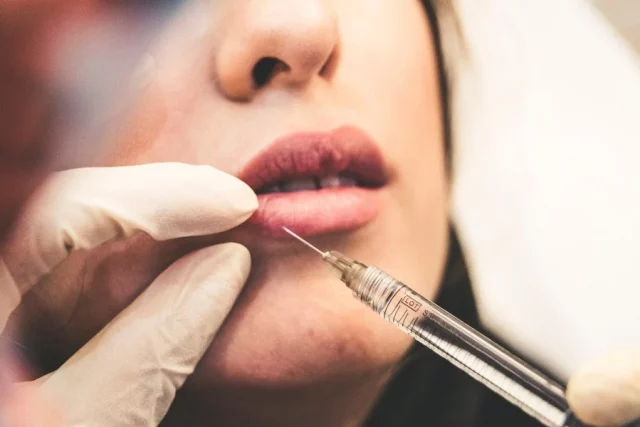More and more people are opting for non-invasive facelifts. These procedures are much less invasive and can provide great results with little to no downtime. However, there are some things you should know before booking your next non-invasive facelift. Here’s what you need to know!
Who Is The Right Fit For A Non-Invasive Facelift?
Not everyone is a good candidate for a non-invasive facelift. The best candidates for facelifts in Dallas are those who have mild to moderate signs of aging, such as wrinkles and sagging skin. If you have more severe signs of aging or if you are looking for a dramatic transformation, then a non-invasive facelift may not be right for you. You can read more about all the predispositions you should have before you decide to undergo this procedure. Age is one of the most important factors, and as such, the procedure is not recommended for patients younger than 35 years of age.
Also, if you have a lot of excess skin, a non-invasive facelift may not be the best option for you.
What Can I Expect From A Non-Invasive Facelift?
Non-invasive facelifts can provide great results, but they are not as dramatic as traditional facelifts. The goal of a non-invasive facelift is to improve mild to moderate signs of aging. You can expect to see a reduction in wrinkles and sagging skin, and your overall appearance will be more youthful.
However, if you are looking for a dramatic transformation, then you may want to consider a traditional facelift. Here are some specific changes a non-invasive facelift can bring:
- Reduction in wrinkles and sagging skin – this is achieved by the use of ultrasound or radiofrequency energy
- More youthful appearance – the skin is tightened and lifted, giving you a more youthful look
- No scars – because this is a non-invasive procedure, there are no scars required
If you are considering a non-invasive facelift, it is important to understand what to expect. Talk to your doctor about your goals for the procedure and ask any questions you have. They can help you decide if a non-invasive facelift is right for you.
What Are The Risks And Side Effects Of A Non-Invasive Facelift?
The risks and side effects of a non-invasive facelift are minimal. Some patients may experience minor swelling or bruising, but these symptoms will go away within a few days. There are no long-term risks or side effects associated with this procedure. If the symptoms of swelling and bruising do not go right away, contact your doctor for further instructions.
If you have underlying chronic conditions such as diabetes or high blood pressure, please discuss these with your doctor before undergoing a non-invasive facelift.
How Non-Invasive Facelifts Are Performed
Non-invasive facelifts are performed using ultrasound or radiofrequency energy. These devices send energy deep into the skin, causing the tissues to heat up and contract. This in turn stimulates the production of new collagen, which helps to reduce wrinkles and sagging skin. The procedure is typically performed in a doctor’s office and takes about an hour. You will be given a local anesthetic to numb the treatment area. There is no downtime required after the procedure, and you can resume your normal activities immediately.
The Role Of Collagen Production In The Skin
One of the most important aspects of keeping your skin looking young and healthy is collagen production. As you age, your body’s ability to produce collagen decreases, which can lead to a loss in elasticity and firmness in the skin. This is why many people turn to non-invasive facelifts as a way to restore a more youthful appearance.
Also, collagen production is known to play a role in wound healing, so if you are considering a non-invasive facelift, it’s important to keep this in mind.
How Eating Supplements Can Help Boost Collagen Production
If you are looking for a way to boost collagen production, consider eating supplements that are known to help. Some of the most common collagen-boosting supplements include:
- Marine Collagen: A type of collagen that is derived from fish scales, Marine Collagen is rich in amino acids and protein. It is thought to help promote collagen production and is effective in reducing wrinkles and improving skin elasticity.
- Hyaluronic Acid: This compound is found in the body and is responsible for retaining moisture. It has been shown to help increase collagen production, as well as reduce the appearance of wrinkles and sagging skin.
- Gelatin: Gelatin is a protein that is derived from animal collagen. It is known to help improve skin elasticity, as well as increase collagen production.
Not only will this help reduce wrinkles and sagging skin, but it will also help promote wound healing. Talk to your doctor about which supplements are right for you, because some supplements don’t help at all and can be a waste of money.
After-Facelift Care
Once you have had your non-invasive facelift, it is important to follow some simple after-care instructions. Here are a few tips to keep in mind:
- Avoid sun exposure. The skin will be more sensitive after the procedure and can easily become sunburned. Make sure to wear sunscreen whenever you are outside.
- Avoid strenuous activity. The skin will be more fragile after the procedure and can easily become injured. refrain from strenuous activity until the swelling and bruising have subsided.
- Avoid using beauty products that contain retinol or glycolic acid. These products can irritate the skin and should be avoided until the healing process is complete.
- Follow your doctor’s instructions. Make sure to follow your doctor’s instructions for after-care and take any medication they prescribe.
By following these simple tips, you can help ensure a speedy recovery and minimize the chances of complications.
There are many different types of non-invasive facelifts available, so it’s important to do your research and find the one that is right for you. A non-invasive facelift is a safe and effective way to achieve youthful-looking skin. If you are considering this procedure, be sure to talk to your doctor about your goals and ask any questions you have. They can help you decide if a non-invasive facelift is right for you. If you’re looking for a way to reduce wrinkles and sagging skin, a non-invasive facelift may be the answer.














